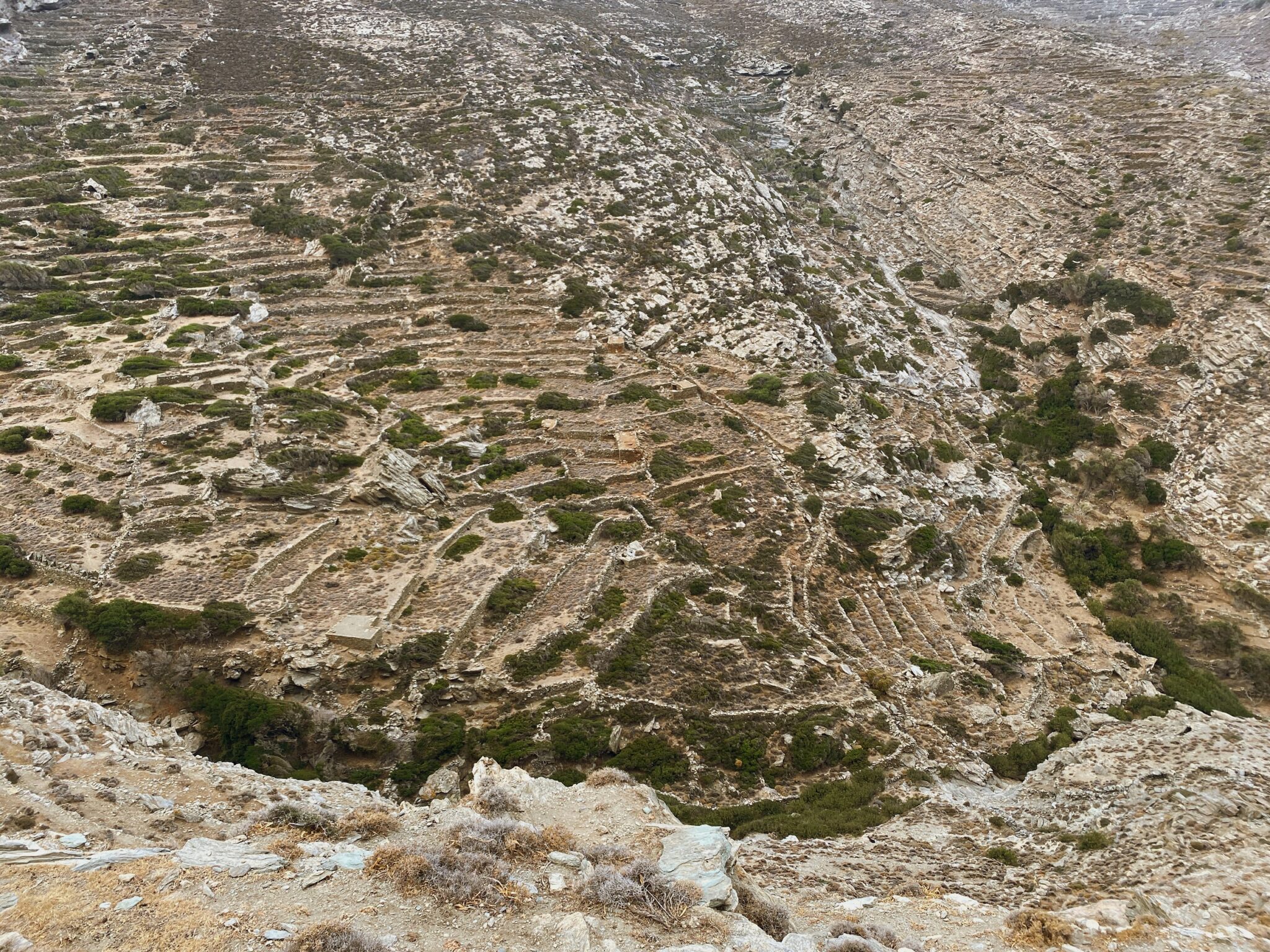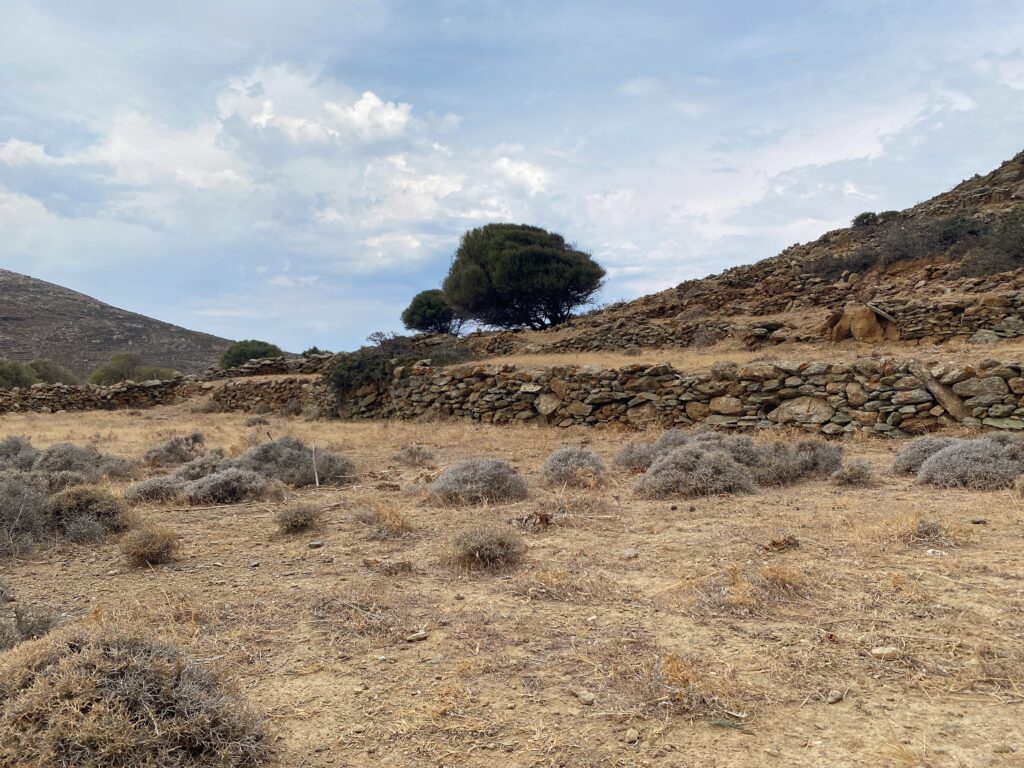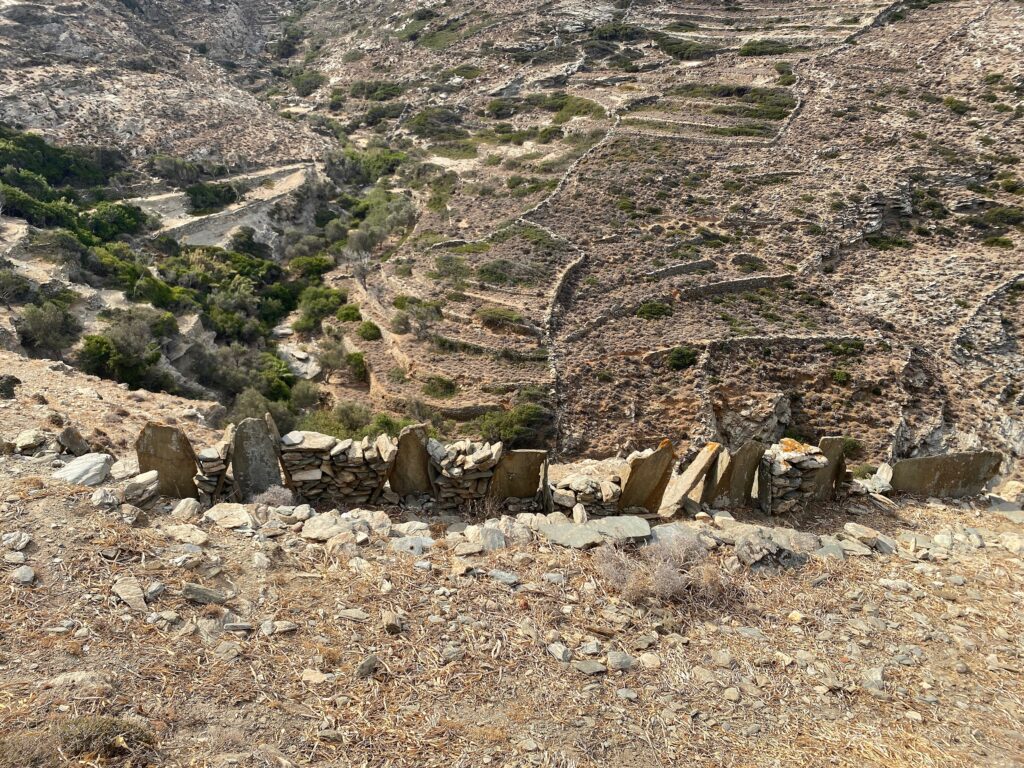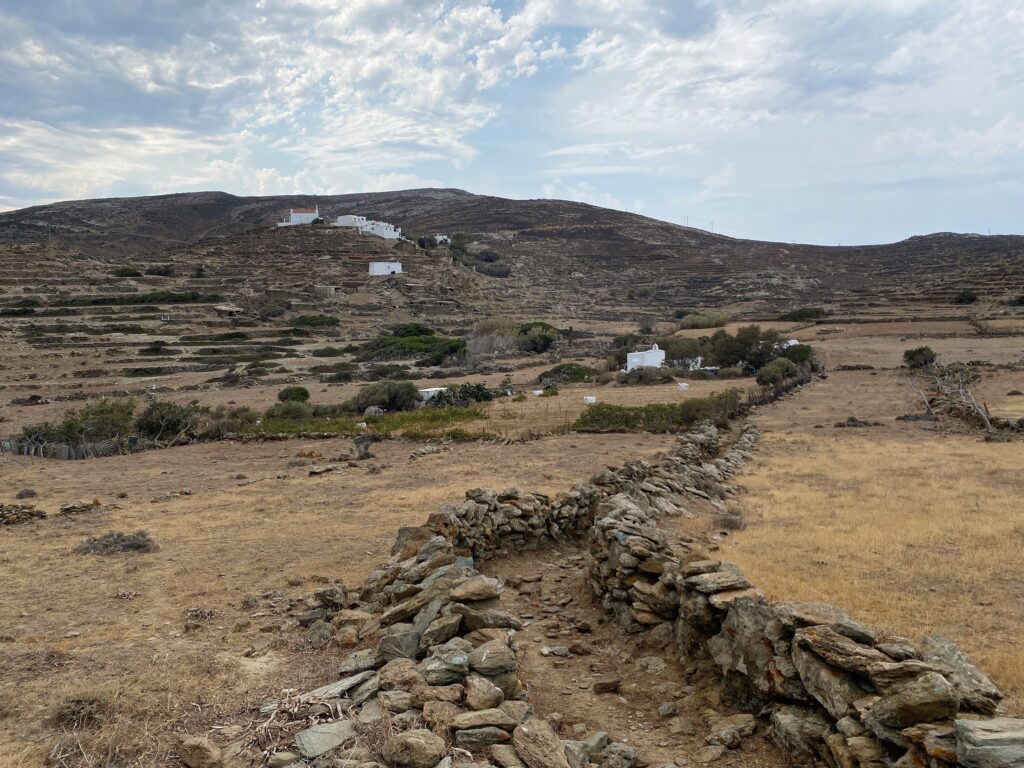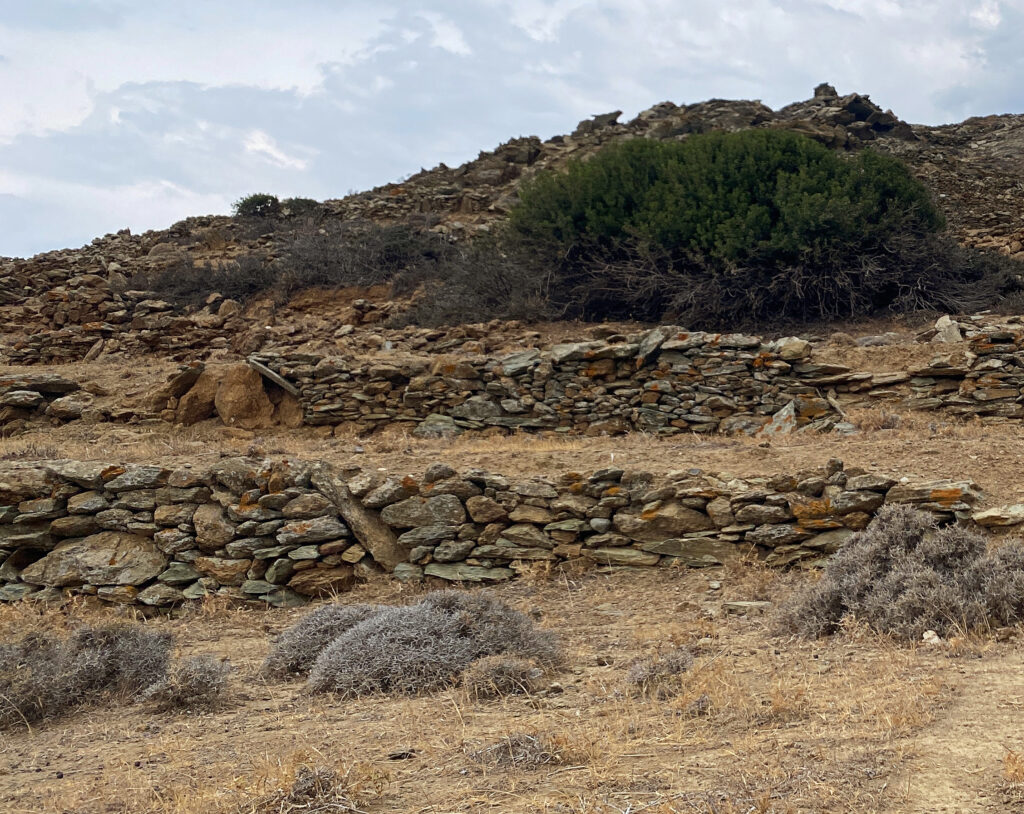The dry-stone landscape of Tinos, a living monument
The rural landscape of Tinos is unique in the Aegean, as it represents one of the most intensively cultivated terrains in the Cyclades.
Dry-stone walls – the art of masonry without using any binding material – frame the painstaking labor of the island’s inhabitants, shaping terraces, shelters, dovecotes, mills, irrigation systems, and paths that once linked all the villages together.
The year 2018 was a milestone for the island, when UNESCO recognized the art of dry-stone walling as an element of Intangible Cultural Heritage of Humanity, worthy of acknowledgment, promotion and protection. The Tinian landscape features an extensive network of access routes to settlements, estates and countless agricultural structures, none of which exist in isolation. The dovecotes, the roads leading to them, and the terraces on which they stand are all integral parts of one indivisible whole.
The dry-stone landscape was a vast infrastructure project that allowed the locals to live and survive, holding back the sloping terrain by using the natural materials they found around them.
This dry-stone landscape was a vast infrastructure project that enabled the locals to live and survive, holding back the sloping ground by using only the natural materials found around them. Completed over the course of many centuries, this remarkable achievement now forms the backdrop of contemporary life and the canvas upon which both residents and visitors are called to act.
Not every visitor may know its history, yet few remain unmoved by the energy the landscape exudes – an energy infused with the hundreds of thousands of hours of labor spent by the islanders in sculpting their land. But what does it mean for the island’s future that we have inherited a handmade – and therefore fragile – landscape, without inheriting the very skills that created it?
See also
The unparalleled splendor of the Derveni Crater
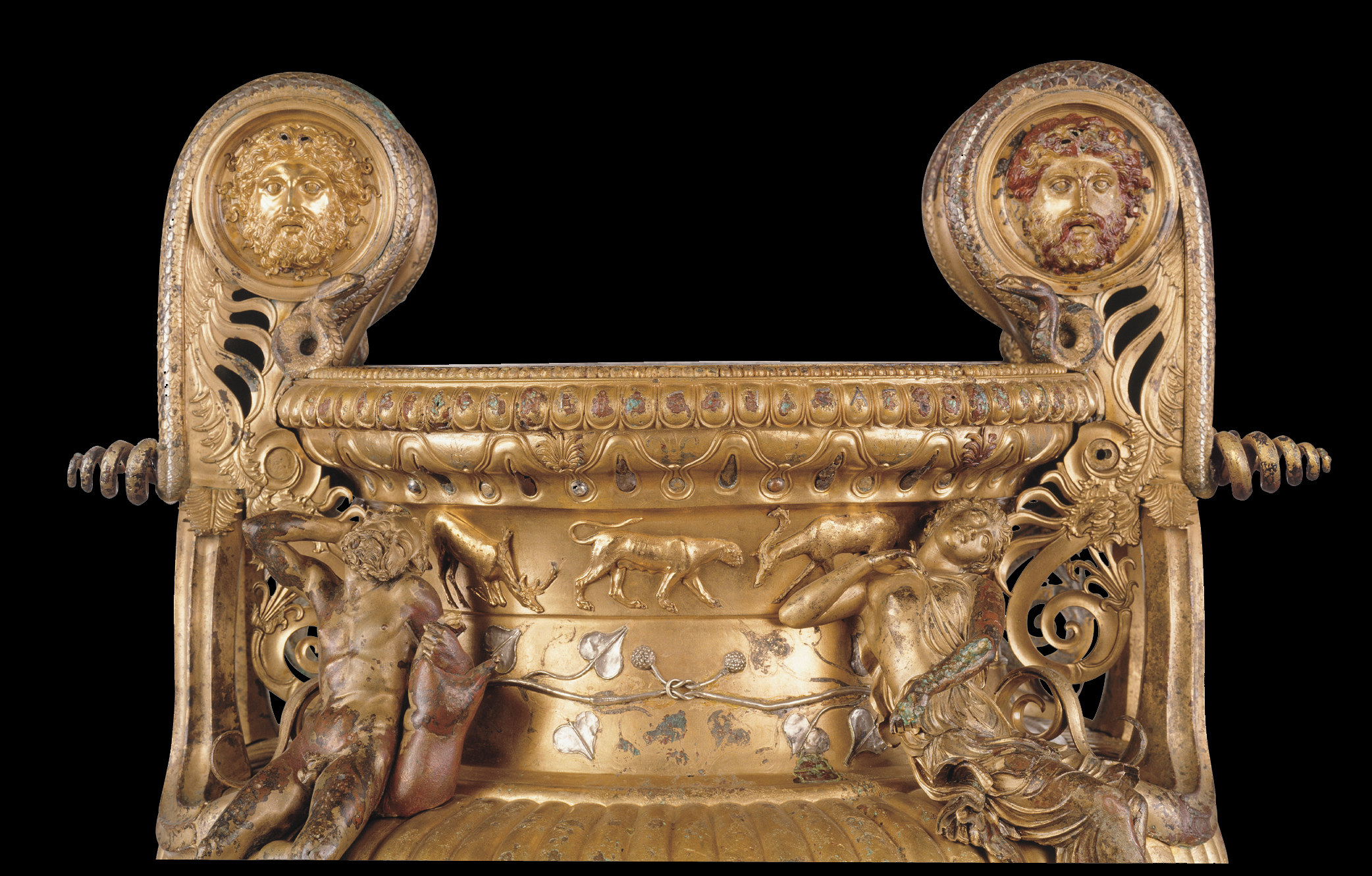
The undisputed masterpiece of the Archaeological Museum of Thessaloniki fully deserves its reputation as one of the most important works of ancient bronze craftsmanship – though nothing compares to the experience of seeing it in person.
A 2,000-year-old mummy at the Archaeological Museum of Thessaloniki
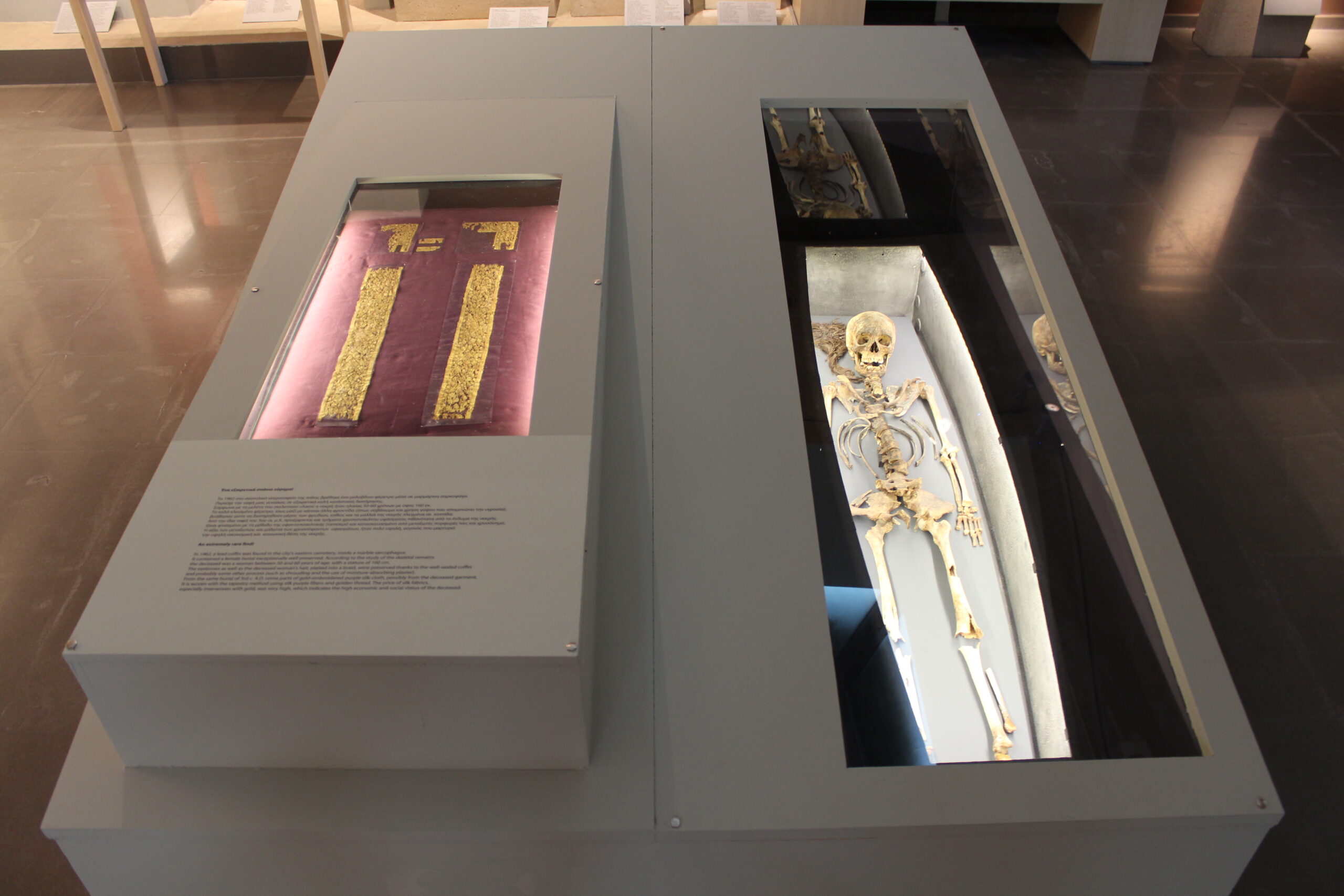
The story of a female mummy from the 4th century AD – with her chestnut braid still intact and a gold-embroidered silk fabric accompanying her on her eternal journey – reveals an exceptionally rare discovery for the Hellenic world.
The incredible adventures of the Lion of Cythera
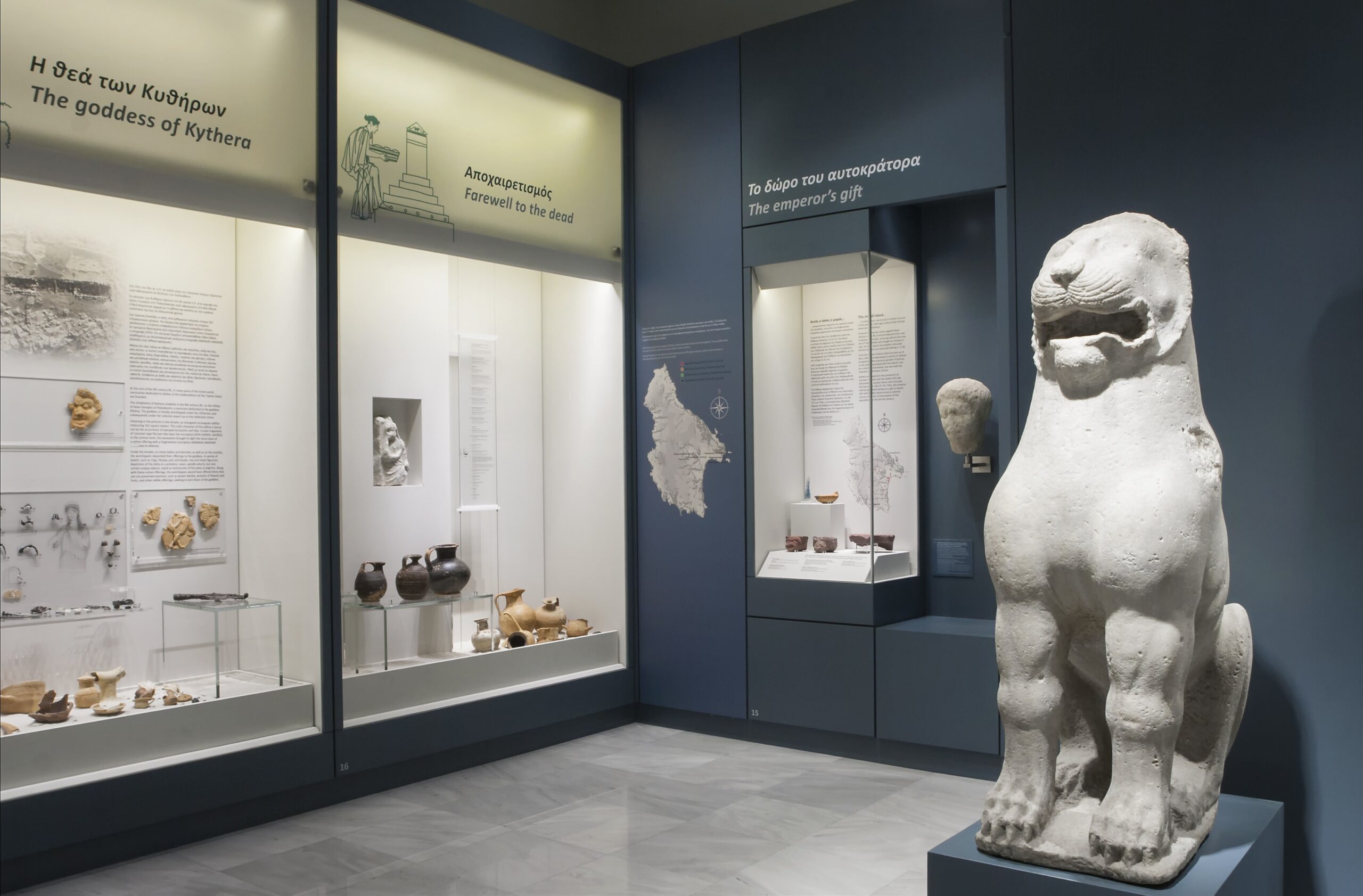
The powerful marble archaic lion that dominates the Archaeological Museum of Cythera has endured a true odyssey – changing hands and homes many times over before finally finding a permanent shelter.

